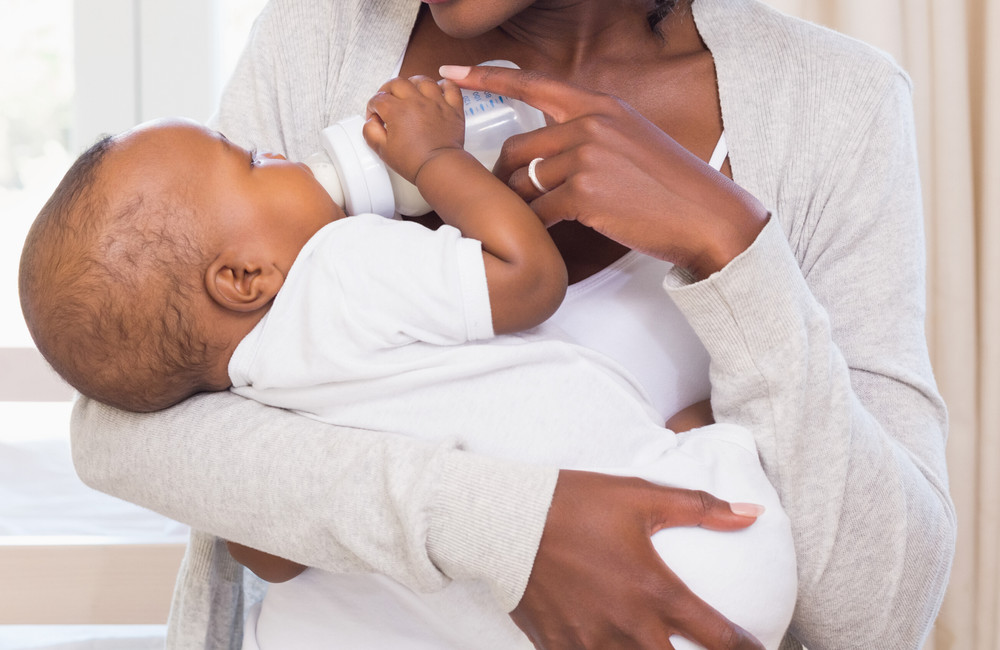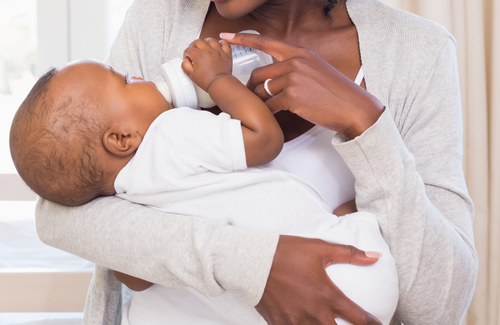
When deciding how to feed their children after birth, women living with HIV in the UK face complex decisions due to contradicting guidelines from healthcare organisations. These women are more likely to be first- or second-generation immigrants, often from Black communities and 45% live below the poverty line. These women face stigma and discrimination due to HIV, compounded by their race and socioeconomic background, making engaging with healthcare challenging. Dr Tanvi Rai and her colleagues wanted to know about the lived experiences of this group of women, so interviewed pregnant and postpartum mothers living with HIV about their experience with infant feeding. Their article published in Women’s Studies International Forum comes to the conclusion that sadly the UK guidance for these women seems to “predestine them to fail at doing ‘what is best for their baby’”.
In 2021 and 2022, 36 cisgender women living with HIV were interviewed about their HIV status and experiences with infant feeding and pregnancy. Of these women, eight were currently pregnant and five had received their diagnosis of HIV during their most recent pregnancy, rather than before conception. For most of the women their HIV status was known to close relations and their healthcare providers, although two reported their current partners being unaware of their status. Many had built close relationships with their HIV specialist clinicians over several years but had increased interactions with other healthcare professionals during their pregnancies.
Breastfeeding
The World Health Organization (WHO) guidance for use in low resource settings recommends exclusive breastfeeding for mothers living with HIV. This is because in these settings the risks of contaminated water when formula feeding outweigh the risks of vertical transmission of HIV, which is estimated to be about 14% for women not on HIV treatment. As in many other countries, the general message in the UK is that ‘breast is best’ with 81% of new mother’s attempting to breastfeed, although this drops to 1% by 6 months.
But this is in stark contrast to specialist guidelines for women living with HIV in most high-income countries, with the British HIV Association (BHIVA) recommending that women living with HIV avoid breastfeeding, even if taking HIV medication with an undetectable viral load. Until 2010 any women who breastfed in this context were referred to social services due to the risk posed to the infant. For many of these women who are migrants from African and Asian countries this becomes confusing, as their family and healthcare providers back home are giving completely different advice.
One interviewee expressed the difficulty she had in understanding this advice, particularly as healthcare providers often did not give sufficient explanations:
“I understand that people in in Africa and those parts, that part of the world they are being advised to breast feed whereas if you're here they give you the option to formula feed. So what is the difference between this part of the world and that part of the world?”
In 2018, the BHIVA guidelines were changed so that while formula feeding is still recommended as the safest option, women living with HIV can be supported to breastfeed. This is only if the woman’s viral load is undetectable and with at least monthly blood testing for mother and baby, deviation from which could still result in referral to social services. The extensive follow up can be very distressing for new mothers but one woman described how she persevered with support from her family and HIV team as “breastfeeding [is] all I've ever seen from aunties, cousins, family, that's all I've ever seen.”
Responsibility for transmission in these circumstances is also deemed to lie with the mother herself as formula feeding is preferred by BHIVA. One participant explained how this made her feel:
“What ends up happening is that every mother regardless of how negligible that risk is will then internalise the fact that like this choice could still somehow lead to that… Many, many mothers they would hold themselves to like such a high, like I feel like they'd be punishing themselves for the rest of their life if that happened.”
Mothers living with HIV who did choose to breastfeed described many other barriers to that choice and judgement from healthcare professionals, often due to misunderstandings or ignorance of correct guidelines with non-HIV specialists. One mother had planned to breastfeed but when her baby was born prematurely and she took the milk she pumped to the intensive care unit, the nurses threw it away as they believed they weren’t allowed to give it.
“I felt really disappointed in myself that I put her through this and I let her go through this when you see other mummies there expressing and taking it for their babies, put their stickers name on them, put them in the freezer and for me I can't do it.”
Another mother who had bottle fed her first child, but then chose to breastfeed her second child following extensive research, had the following interaction:
“During my meeting with the paediatrician… she had actually said to me that, you know, “If this doesn't work out you need to not be very stubborn with it”… I said, “I've done my research, I know that things, it's not easy but I'm prepared to sort of try my best and of course I'm not gonna [um] I I don't-,” I said, “I-“ well I said, “I would-“, I don't, don't think I even responded to the comment about not being stubborn.”
As a well-educated woman, with a White partner and high socioeconomic status, she felt able to challenge her paediatrician on this statement, while many women including the previous mother whose baby was premature, do not have that ability.
Formula feeding
It is important to note that in many Black and Brown communities bottle feeding is highly stigmatised, so doing so in these communities carries a risk of accidentally disclosing the mother’s HIV status. One woman described how her “African parents were all over me” for not breastfeeding as they were unaware of her status, which created a lot of difficulty, particularly when feeding her baby on a family holiday to West Africa, with family members constantly questioning why she was not breastfeeding. For some the concerns about disclosure of their status also meant avoidance of support groups for mothers with HIV, which could have been hugely beneficial to their mental wellbeing.
Some women struggled with formula feeding because of the shame around their HIV status and perceived guilt in acquiring HIV in the first place. Formula feeding is expensive and for some women carries a sense of shame and feeling like less of a mother:
“It sounds so silly or it sounds so selfish I know, but like I think it does affect that sort of initial bonding process. Because anyone could feed him like he wanted milk and anyone could give that to him like it wasn't just me… he wouldn't even know that I was him mum.”
“I did not want to bottle feed. I didn't care about they are free bottles, I didn't care about the free milk. For me I just wanted to have that bond with my child.”
One woman described how she decided against breastfeeding, despite her HIV team discussing the option with her:
“I produce milk to be a nutritious and food for my child. If there is a possibility that that could be tainted or [um] not give the child, the nutrients, or alongside giving the nutrients give something else, it's not a risk that I personally would want to take.”
Conclusion
Although the UK guidelines for infant feeding seem to offer choice for mothers living with HIV, their actual experiences describe difficult, often isolating decisions. Women are strongly encouraged to bottle feed by healthcare professionals which leads to many questions in a society that generally promotes breastfeeding. Women with HIV who choose to breastfeed must agree to intensive clinical surveillance and face stigmatising attitudes due to the risks of vertical transmission, while wider cultural factors and mental and physical considerations for these women are ignored. Women are being made to feel like ‘bad’ mothers irrespective of whether bottle or breastfeeding.
To combat these issues, the researchers suggest that more nuanced counselling is required that fully addresses the lack of consistency between international and national guidelines. The emotional and cultural needs of individual patients need to be addressed. Furthermore, there needs to be much more support for the practical aspects of infant feeding.
They conclude that “the suffering that results from the felt ambiguity between UK and global guidance needs to be acknowledged and we have shown that feeding an infant while living with HIV (whether by breast or formula) is experienced by some as a transgressive act.”
Rai T et al. Infant feeding as a transgressive practice in the context of HIV in the UK: A qualitative interview study. Women’s Studies International Forum 101: 102834, 2023 (open access).

